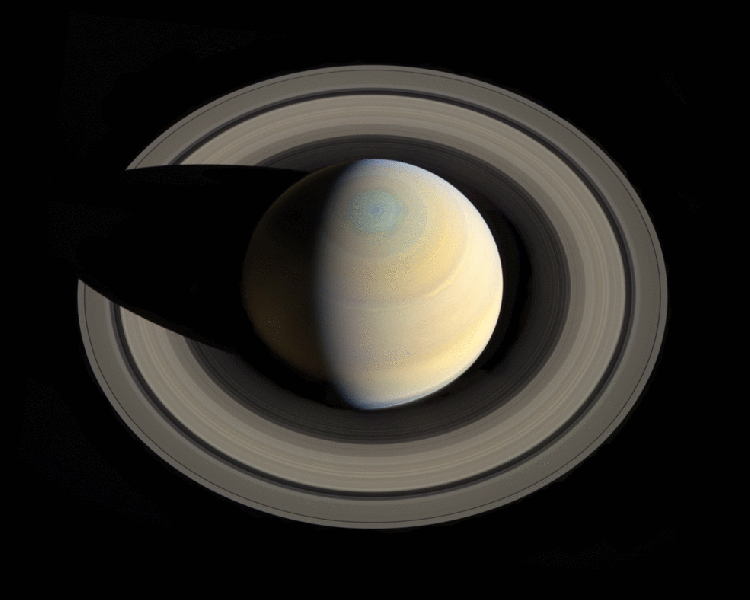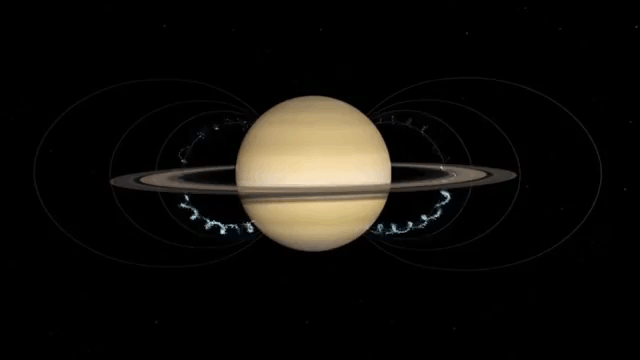How an Icy Rain Is Causing Saturn’s Rings to Disappear
Dr. James O’Donoghue, the Planetary Scientist at NASA Goddard who created the brilliant animation visualizing the speed and angle at which the eight largest planets revolve, has created another fascinating animation to accompany interesting news about Saturn.
Per an informative paper written by O’Donoghue and other team members, the rings around Saturn are disappearing due to icy ionically charged rain as seen through revisited images from a 10 meter Keck telescope on Mauna Kea, Hawaii. This weather condition, known as “ring rain” permeates into the composition of the rings and pulls through the magnetic field leading towards the planet. If enough of this rain falls, the rings will completely disappear through planetary absorption over the course of 100 million years.
“We estimate that this ‘ring rain’ drains an amount of water products that could fill an Olympic-sized swimming pool from Saturn’s rings in half an hour…From this alone, the entire ring system will be gone in 300 million years, but add to this the Cassini-spacecraft measured ring-material detected falling into Saturn’s equator, and the rings have less than 100 million years to live. This is relatively short, compared to Saturn’s age of over 4 billion years.”
Saturn's Divorce: The future of Saturn's rings over the next few hundred million years! See our new result at: https://t.co/tANCzFKshL ? pic.twitter.com/rb1hxwvUWq
— Dr. James O'Donoghue (@physicsJ) December 17, 2018








